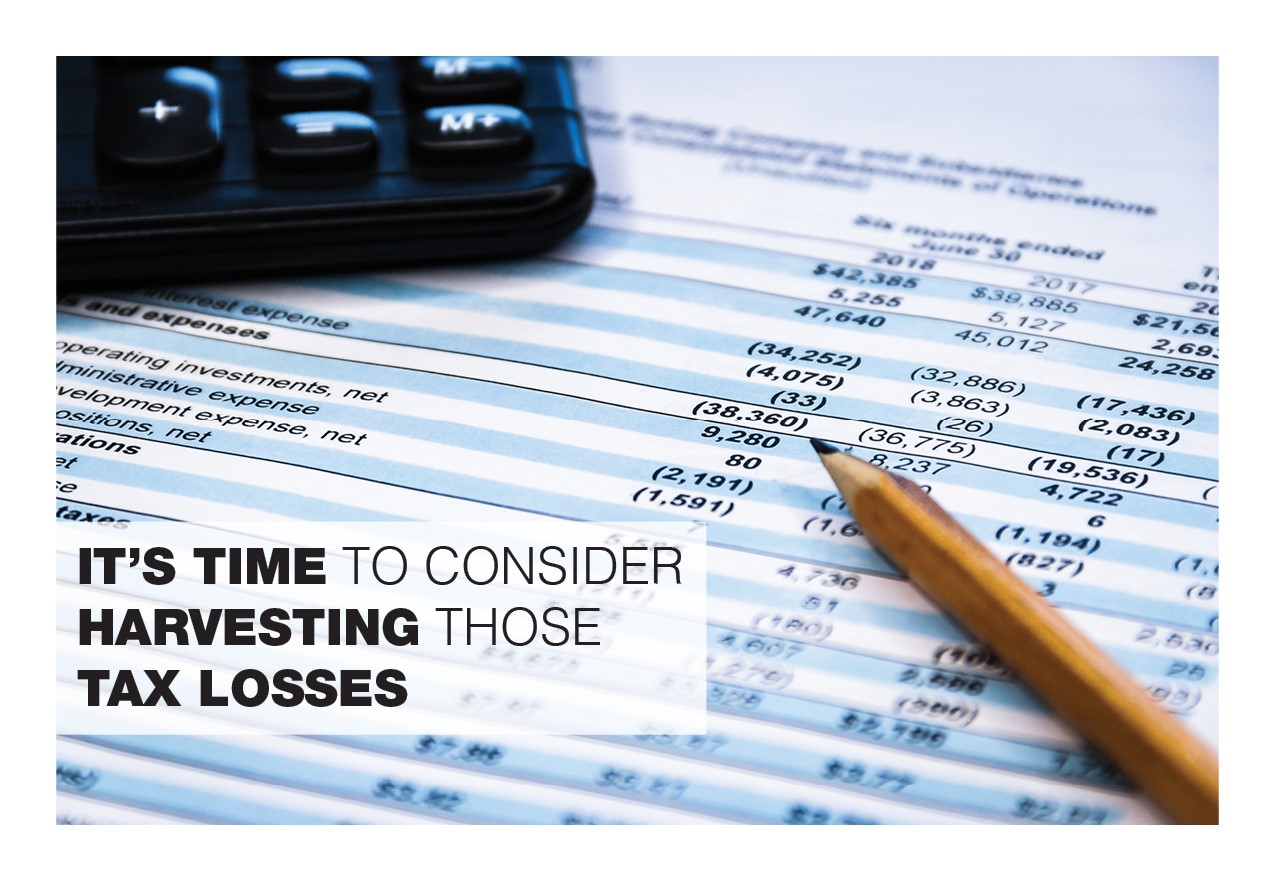Even the best investors lose money in the markets from time to time, but still, they need to remain disciplined in tracking their investments. Part of being an investor is good account management. 2008 and 2020 will go down as years with an unexpected shock, creating volatility and opportunities in the financial markets.
Whatever the reason your stocks or bonds have lost value this year, you should talk with your tax advisor and financial advisor about harvesting those losses, potentially reducing your capital gains liabilities. It is particularly important to address this issue now, as we quickly approach the end of the year and we face a proposal to increase capital gains tax.
Here’s a hypothetical example of how tax harvesting could work. Let’s say you sold 1,000 shares of company ABC for a net profit of $50,000, resulting in a $10,000 capital gains tax liability based on your income bracket. If you also sold 500 shares of company XYZ that realized a net loss of $50,000, you may be able to counteract that liability.
Be aware that there are many rules and regulations that apply to these concepts. For instance, the Internal Revenue Service (IRS) differentiates between short- and long-term holdings for tax purposes but they also put equities and bonds into separate categories. If your assets are held in a qualified retirement account, such as a 401(k) or SEP-IRA, you don’t have to worry about capital gains or losses until you withdraw those funds. You should consult with an experienced tax attorney or accountant for appropriate guidance based on your personal situation.
That said, we believe it is important to be aware of a few tax harvesting strategies that could offer significant benefits. These can be implemented at any time during the year but hold particular significance during the fourth quarter.
1. Selling and buying. If you sell 1,000 shares and realise a loss, you must wait at least 30 days after the transaction before you can repurchase the same equity, or you lose the benefit of the tax loss. Just remember, if you have some losses you want to realise, sales should be completed by mid- to late- November because of the repurchasing restrictions.
2. Doubling your shares. Alternatively, you could buy an additional 1,000 shares, doubling your holdings, then wait at least 30 days and then sell your original 1,000 shares to harvest a tax loss. If the value of those shares goes up during the 30 days, your losses might be reduced and you could decide to hold on to those shares.
3. Taking a hit. Another strategy involves taking your losses this calendar year with no gains to offset. You could then carry those losses forward, reducing potential future gains. If you report a $50,000 loss on equities this year, but only $10,000 in gains, you could retain the $40,000 difference and apply it against a future year’s gains.
4. Gifting your shares. If you have equities or bonds that have increased in value, without compensating losses, you could gift those assets to a child, grandchild or charity. This can benefit your heirs, while removing a potential tax liability in the future. But don’t wait until December 31 because it usually takes at least several days to for financial institutions to complete these types of transactions and they may be short staffed over the holiday season.
Although I have been advising high-net-worth individuals and families for many years, it still surprises me that many clients are unaware of these strategies. As the year draws to a close, you should take a look at your portfolio and see if harvesting your tax losses makes sense.

Leave A Comment